Naadam festival in Ulaanbaatar. Wrestling. Archers. Horse riding. Three games of men.
TRIP TO MONGOLIA TOURS
INFORMATION FOR TRAVELERS
THE NAADAM FESTIVAL

The biggest event of the Mongolian year for foreigners and locals alike is the
Naadam Festival held in July in
Ulaanbaatar. ft is also the main draw card on most tour programs.
Part family reunion, part fair and part nomad Olympics, Naadam (meaning 'holiday' or 'festival') has its roots in the nomad assemblies and hunting extravaganzas of the Mongol armies. Even today,
Chinggis Khaan's nine yak tails, representing the nine tribes of the Mongols, are ceremonially transported from
Sukhbaatar Square to Naadam Stadium to open the festivities.
The communists renamed the festival People's Revolution Day and fixed it to July 11 to 13, on the anniversary of the Mongolian Revolution of 1921. However, in country centers close
to Ulaanbaatar, Naadam festivities may be held before or after the major festival in
Ulaanbaatar. Some people like to attend both the local and national celebrations. The quality and number of
sports and activities at Naadam festivals in the countryside will be lower than in
Ulaanbaatar, but at a country Naadam you are more likely to get better seats, witness genuine festivals tainted
without the tourist's brush, and even make up the numbers during a wrestling tournament! Watch out!
Some travelers visit the smaller Naadam at Zuunmod, an hour's drive from Ulaanbaatar, which is held at the same time as the capital's. Naadam festivities are also held at
different times in the Kazakh and Buryat regions (a large Buryat Naadam was held in Dashbalbar in Dornod in late July 2000).
Unless you are really keen on the three main (and manly) sports, the festival itself can be a little disappointing and may not be worth coming specially to Mongolia to see. The
opening and closing ceremonies, the associated activities and shows, and the general joy around the country, though, are reasons
enough to base a visit around the Naadam Festival. Bear in mind that accommodation can be scarce during Naadam, and prices are often higher than normal. Book your hotel in advance or get there a few days early to
tee up your room.
You may not bother seeing everything that Naadam has to offer. However you should try to make it to the following: the ceremony in the Sukhbaatar Square, from there go down to the
stadium to see the opening ceremony. Wait for the first few rounds of the wrestling, then maybe wander off to see the archery and watch the Mongolians outside the stadium. Perhaps watch the horse
racing on day two, and see the closing ceremony later that day.
On or about August 9, another tourist-oriented Naadam Festival called Baga Naadam (Small Naadam) is held. Some travel agents may sell you a program including this inferior festival.
The best and original Naadam Festival will always be held from July 11 to 13 in Ulaanbaatar.
ULAANBAATAR NAADAM FESTIVAL
Wrestling, archery and horse racing are held during the first and second days. Very little happens on the third day, so get drunk the day before, and use it to recover from a
hangover like everybody else does. During the three days, few restaurants and shops open and virtually no-one works.
Day one starts at about 9 am with a fantastic, colourful ceremony outside the State Parliament House at Sukhbaatar Square (often missed by visitors). Hundreds of soldiers in bright
uniforms play stirring warlike music on brass instruments. Mongolians - dressed in Chinggis-style warrior outfits - parade around the square, then circle Parliament House before marching to the
Stadium.
The opening ceremony, which starts at about 11 am at the Naadam Stadium, includes an impressive march of monks and athletes, plenty of music and even parachute displays. The closing
ceremony, with more marches and dancing, is held at about 7 pm on the second day, but the exact time depends on when the wrestling finishes.
The first round of the wrestling, which starts at about noon on day one in the main stadium, is the more interesting and photogenic. Later rounds can get boring - most Mongolians
don't bother returning to the stadium until the final rounds on the second day. If the wrestling gets too much, walk around the outside of the stadium and watch the interaction between Mongolians.
This can be far more interesting than what is happening in the stadium. Also worth a look is the changing of the guards.
Archery is held in an open stadium next to the main stadium. The judges, who raise their arms and utter a traditional cry to indicate the quality of the shot are often more
entertaining than the archery itself. Remember to watch out for stray arrows!
The horse racing can attract well over 1000 horses (so watch your step; this is dung city). During the festival, you may see dozens of horses being herded down the main streets of
Ulaanbaatar, as if they were on the steppes. The horse racing is held at the village of
Yarmag, about 10km along the main road to the airport - it is very easy to spot. The atmosphere is
electric, and there is always plenty to watch.
The best and busiest time to watch the horse racing is at the final race, late on the second day. You will be hard-pressed to see what is going on, and it is unlikely that you will
be able to take any good photos. Get there really early for the final, go to other races on both days, or walk up a few hundred metres along the track where the crowds thin out.
A recent addition to the Naadam program is anklebone shooting. This entails using a hand-propelled mini crossbow to flick sheep ankle-bones, a row of which are set up as a target.
The competition is held in a separate hall, normally near Naadam Stadium, but the location is never fixed so ask around.
Tickets to the stadium (except for the two ceremonies), and to the archery and horse racing are free, but to the opening ceremony foreigners pay US$12, and US$8 for the closing
ceremony. A ticket does not usually give you a seat number, so get there in plenty of time for a good position, especially for the closing ceremony, when good seats may have been taken during the
afternoon.
If on a package tour, your travel agency will arrange tickets. If travelling independently, getting a ticket to the opening and closing ceremonies can be tricky. From 4 to 10 July,
you can buy tickets from the Central Stadium Company and you can normally buy tickets at the stadium before the two ceremonies. Guest-house owners normally help their guests
buy tickets.
To find out what is going on during the festival, look for the events program in the two English-language newspapers, which list the times and locations of the wrestling, archery
and horse racing.
You can find plenty of warm drinks and cold khuurshuur (fried meat pancakes), as well as ice cream, bread and a/rag (fermented mare's milk) around the outside of the stadium.
Take an umbrella or hat, because most seats are not undercover, and it will either rain or be hot.
THE THREE MANLY SPORTS OF THE NAADAM FESTIVAL
Naadam is properly known as Eriyn Gurvan Naadam, after the three 'manly' sports of wrestling, archery and horse racing (though women participate in the first two events). Winning at
Naadam carries great prestige and financial reward. The 2000 Naadam offered T1.5 million of prize money to the winning wrestler and T600.000 to the winner of the main horse race.
1. WRESTLING
Mongolian wrestling is similar to wrestling found elsewhere, except there are no weight divisions, so the biggest wrestlers (and they are big!) are often the best. Mongolian
wrestling also has no time limit- the bout will continue with short breaks. It will end only when the first wrestler falls, or when anything other than the soles of the feet or open palms touch the
ground.
Before each elimination bout, wrestlers limber up and honour the judges and their individual attendants (zasuul) with a short dance called a devekh, or 'eagle dance'.
After the bout, the loser must perform the takhimaa ogokh, walking under the right arm of the winner, who then makes a lap of honour around the flag on a pedestal and does some more eagle
dancing. The gesture signifies peace between the two wrestlers.
Wrestlers wear heavy boots called gutui - similar to the traditional boots worn by ordinary Mongolians. The tight, unflattering pants are called shuudag, and the small
vest across the shoulders is azodog. The open-fronted vest was allegedly introduced after one Amazonian-sized female wrestler floored all the male wrestlers. When it was discovered she was a woman the
vest was introduced to ensure that women would no longer take part in bouts (and thrash the men!).
Winners are bestowed glorious titles depending on how many rounds they win. These are nachin (falcon) - five rounds; zaan (elephant) -seven rounds; and arslan (lion) -
given to the winner of the tournament. When an arslan, or lion, wins two years in a row he becomes an avarga, or titan. One renowned wrestler was given the most prestigious, and lengthy, title
of the 'Eye-Pleasing Nationally Famous Mighty and Invincible Giant'. Mongolia's most famous wrestler is currently Bat-Erdene.
You will see plenty of wrestling if you are in Mongolia during the Naadam Festival, or during the Ikh Sorilgo (Major Test) tournaments in the weeks before Naadam.
2. ARCHERY
Like horse racing, the sport of archery originates from the warring era, starting from around the 11th century.
Archers use a bent composite bow made of layered horn, bark and wood. Usually, arrows are made from willows and the feathers are from vultures and other birds of prey.
Traditionally dressed male archers stand 75m from the target, while women archers stand 60m from it. The target is a line of up to 360-round gray, red and/or yellow leather rings
(known as sur) on the ground. Usually there are only about 20 or 30 rings. After each shot, special judges who stand near the target (but miraculously never get injured) emit a short cry called
a uukhai, and raise their hands in the air to indicate the quality of the shot. The winner who hits the targets the most times is declared the best archer, or mergen.
3. HORSE RACING
There are normally six categories of horse racing, depending on the age of horses: for example, a two-year-old horse, called a shudlen, will race for 15km, while six and
seven-year-old azrag and ikh nas horses race for up to 30km. There are no tracks or courses;
it is just open countryside, which leaves great scope for cheating. Jockeys - boys and girls aged between five and 13 years old - prepare for months for special races, particularly
at Naadam. Horses are fed a special diet for weeks beforehand. The competition is not without its dangers: in 1999 a young rider was tragically killed during one of the horse races.
Before a race, the audience, all decked out in traditional finery, often sings traditional songs. The young riders sing a traditional anthem called a gingo before the race,
and scream 'goog' at the horses during the race.
The winner is declared tumnii ekh, or 'leader of ten thousand'. Riders and spectators rush to comb the sweat off a winning horse with a scraper traditionally made from a
pelican's beak. The five winning horses are admired and talked about in reverence by the crowd, and traditional poems are read out, extolling the virtues of the riders and trainers. The five winning
riders must drink some special airag, which is then often sprinkled on the riders' heads and on the horses' backsides. During Naadam, a song is also sung to the two-year-old horse that places last.
BIBLIOGRAPHY:
- Facts about Mongolia 2000. by Da. Gandbold. ADMOND Co.Ltd., Mongolia.
- Mongolia. Lonely Planet Publications Pty Ltd.
PAGES OF THE PICTURE ALBUM
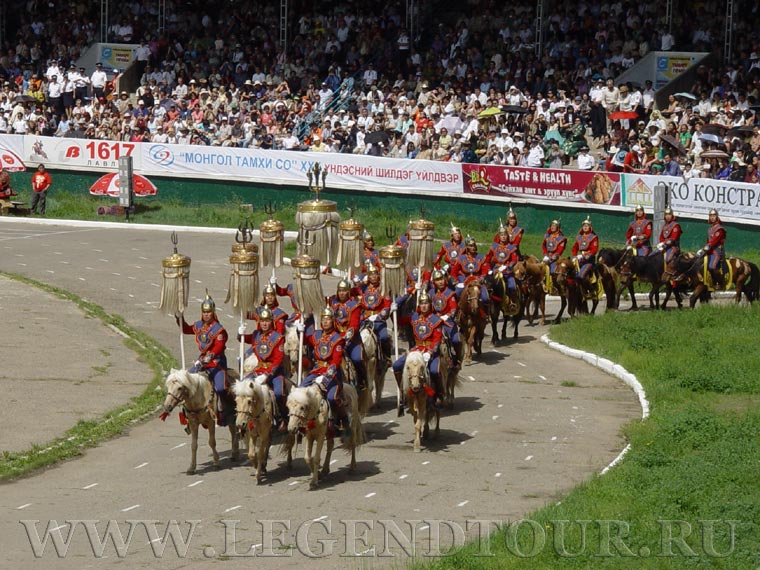
Photo. Naadam festival in Ulaanbaatar. Wrestling. Archers. Horse riding. |
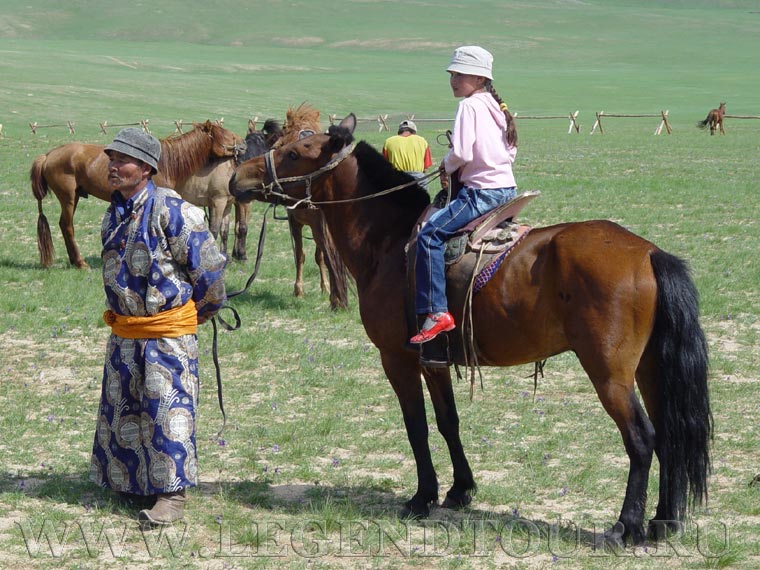
Photo. Naadam festival in Ulaanbaatar. Wrestling. Archers. Horse riding. |
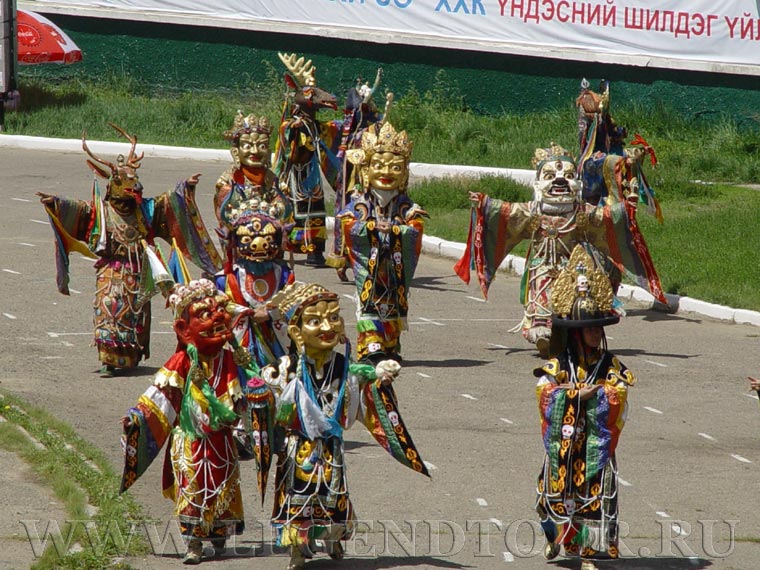
Photo. Naadam festival in Ulaanbaatar. Wrestling. Archers. Horse riding. |
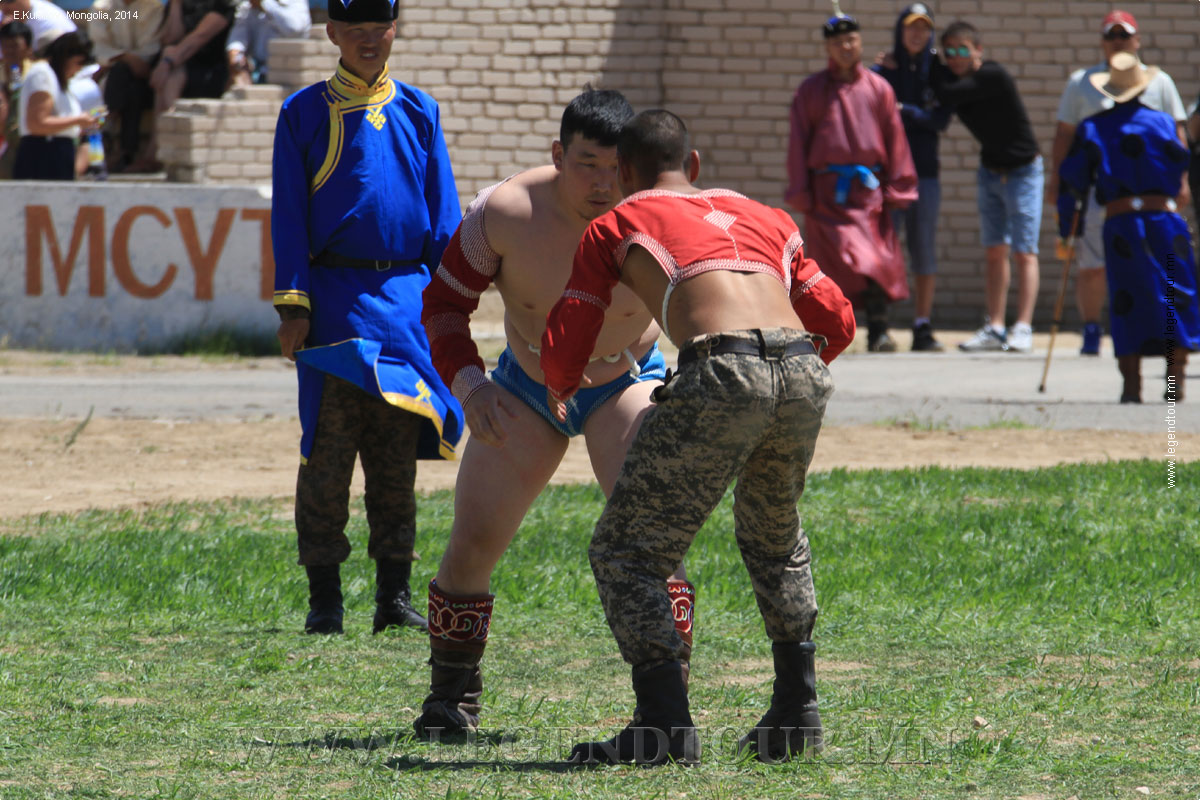
Photo. Naadam festival in Sainshand, Dornogovi, aimag. Wrestling. Archers. Horse riding. |
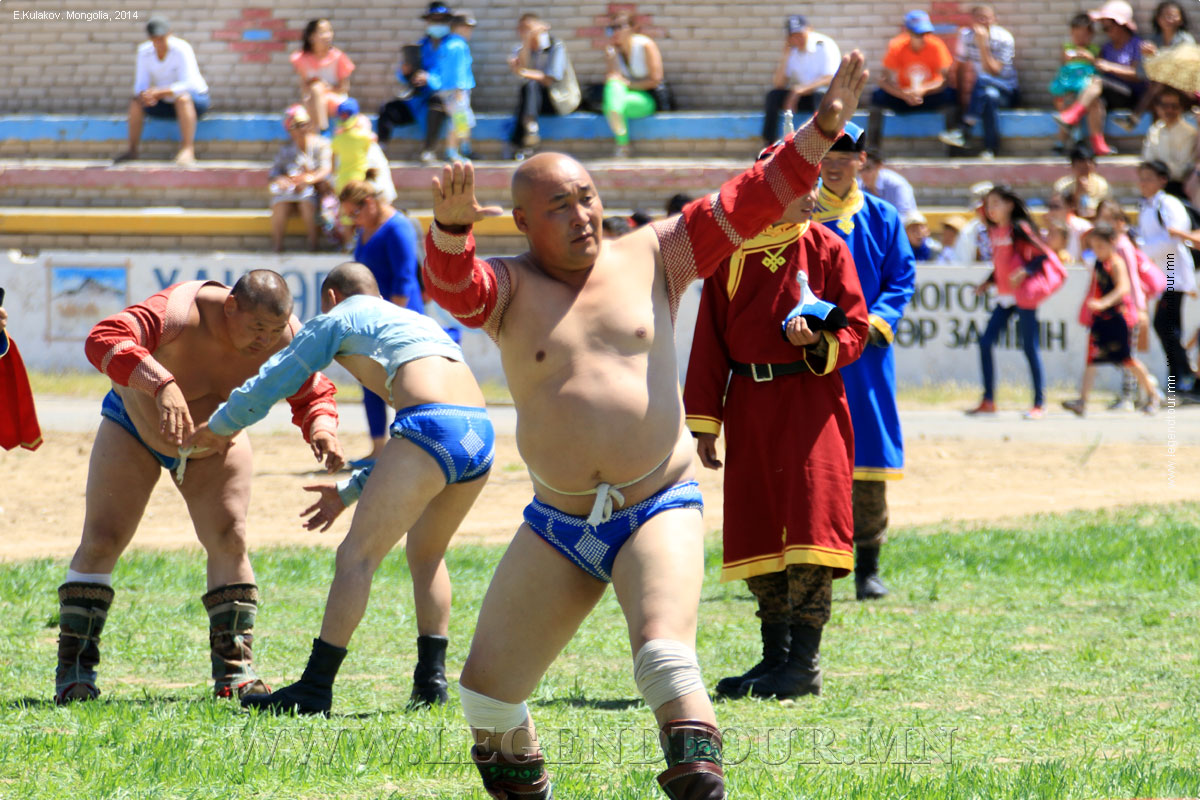
Photo. Naadam festival in Sainshand, Dornogovi, aimag. Wrestling. Archers. Horse riding. |
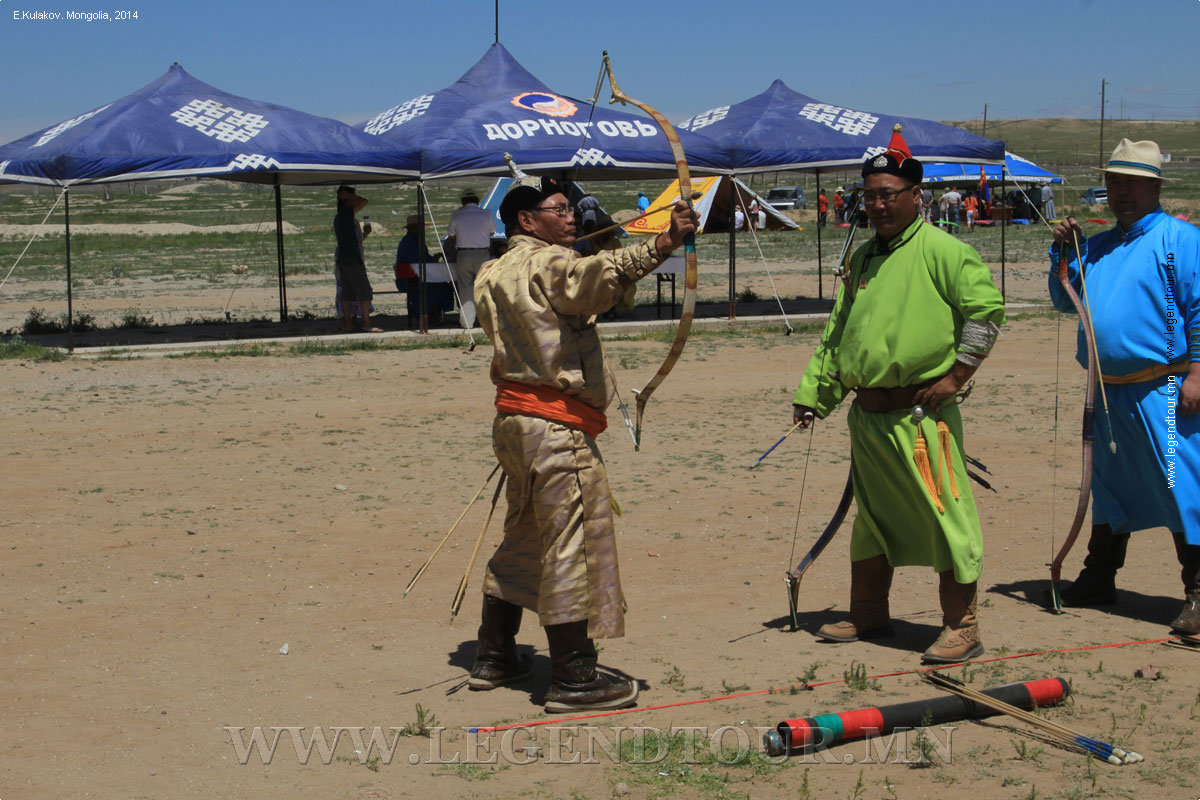
Photo. Naadam festival in Sainshand, Dornogovi, aimag. Wrestling. Archers. Horse riding. |
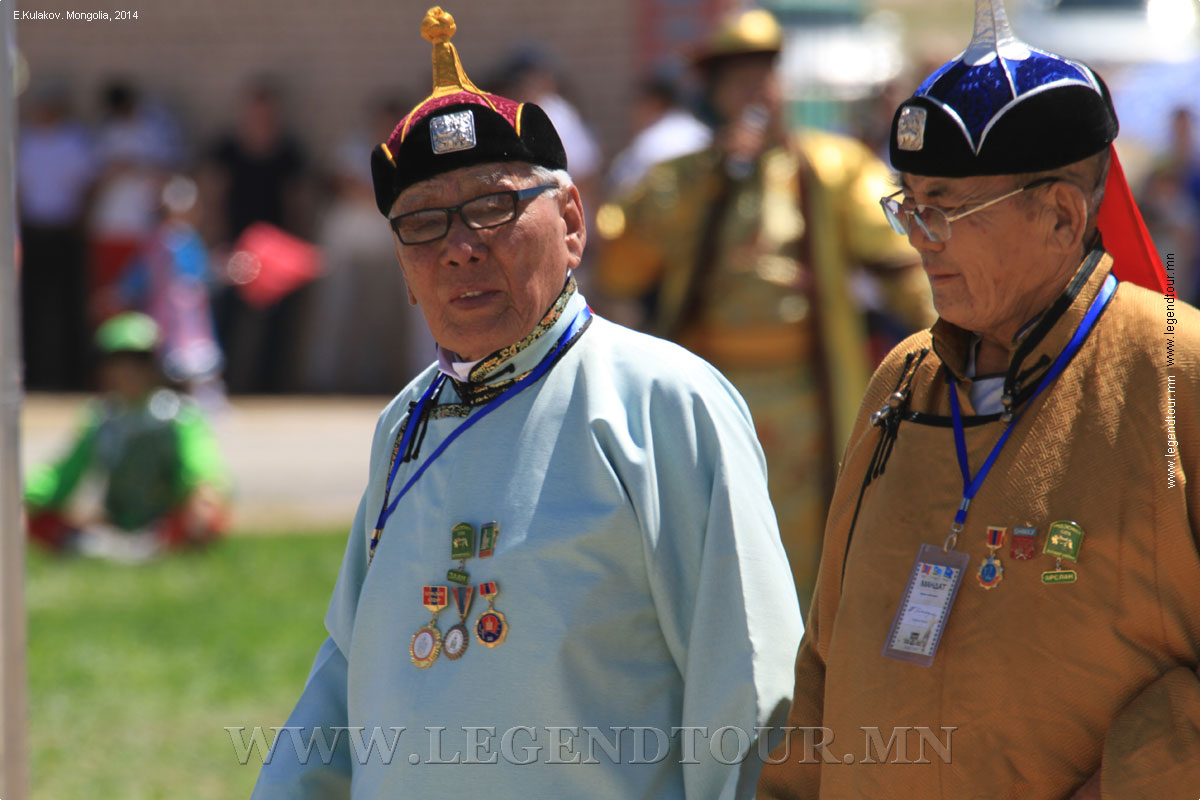
Photo. Naadam festival in Sainshand, Dornogovi, aimag. Wrestling. Archers. Horse riding. |
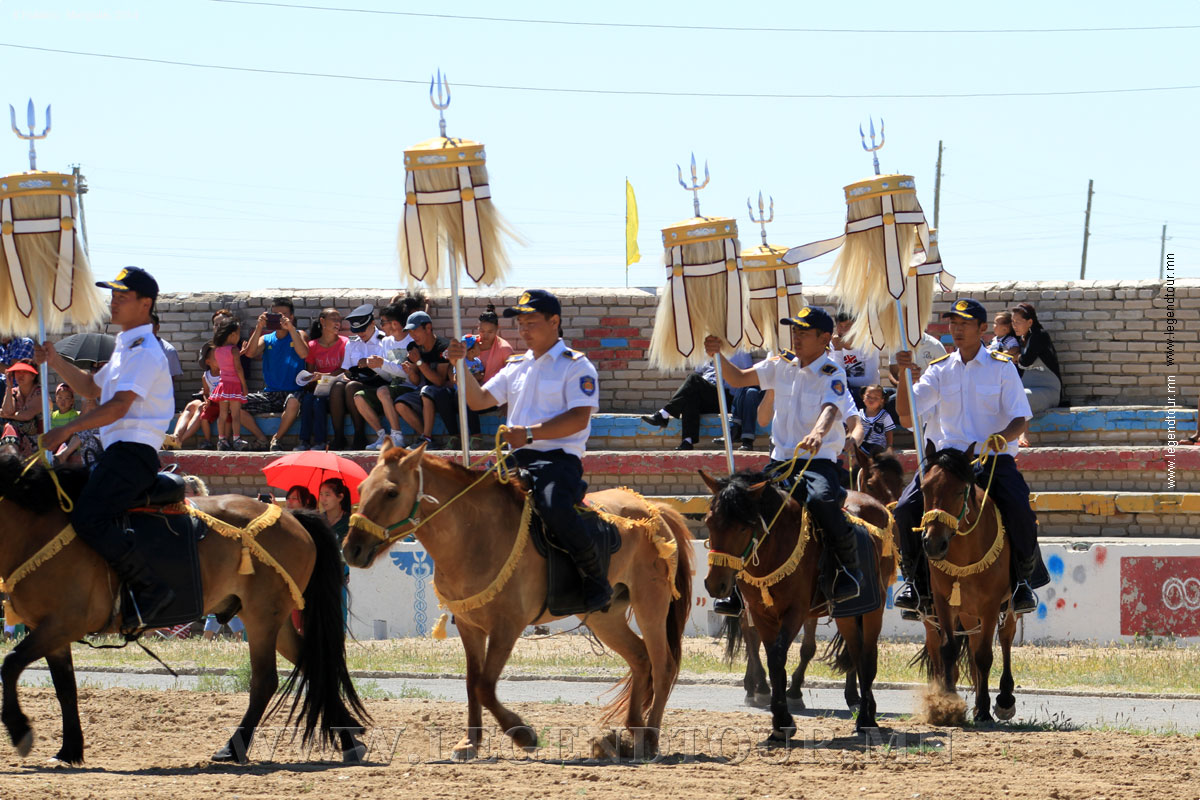
Photo. Naadam festival in Sainshand, Dornogovi, aimag. Wrestling. Archers. Horse riding. |
More pages of the picture album see ...
|